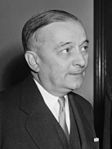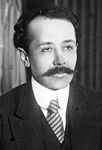French legislative election, June 1946
|
|
|||||||||||||||||||||||||||||||||||||||||||||||||||||||||||||||||||||||||||
|---|---|---|---|---|---|---|---|---|---|---|---|---|---|---|---|---|---|---|---|---|---|---|---|---|---|---|---|---|---|---|---|---|---|---|---|---|---|---|---|---|---|---|---|---|---|---|---|---|---|---|---|---|---|---|---|---|---|---|---|---|---|---|---|---|---|---|---|---|---|---|---|---|---|---|---|
|
|||||||||||||||||||||||||||||||||||||||||||||||||||||||||||||||||||||||||||
|
All 586 seats to the French National Assembly 294 seats were needed for a majority |
|||||||||||||||||||||||||||||||||||||||||||||||||||||||||||||||||||||||||||
|
|||||||||||||||||||||||||||||||||||||||||||||||||||||||||||||||||||||||||||
|
|||||||||||||||||||||||||||||||||||||||||||||||||||||||||||||||||||||||||||
Legislative elections were held in France on 2 June 1946 to elect the second post-war Constituent Assembly designated to prepare a new constitution. The ballot system used was proportional representation.
After the Second World War, three parties dominated the political scene due to their participation in the Resistance to the German occupation: the French Communist Party (PCF), the French Section of the Workers' International (SFIO, socialist party) and the Popular Republican Movement (MRP) Christian democratic party. They formed a provisional government led by General Charles de Gaulle.
General de Gaulle advocated a strong presidential government. He felt that the "regime of the parties" under the French Third Republic's system of parliamentary government (characterised by its political instability and ever-changing coalitions) was a cause of the 1940 collapse. However, the three main parties considered parliamentary democracy to be inseparable from the ideology of French republicanism. To them, de Gaulle's project appeared to be a rebirth of Bonapartism. In January 1946, de Gaulle resigned from the Cabinet.
...
Wikipedia




